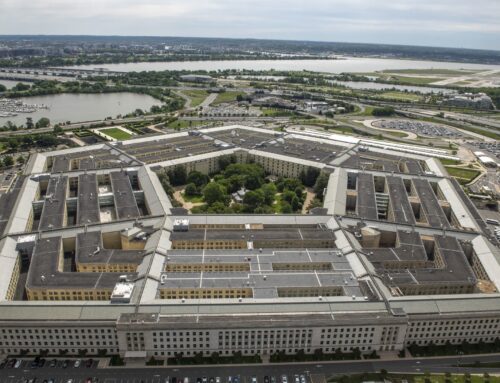The fiscal year 2017 budget request makes clear the Trump administration wants to continue a questionable practice from the Obama administration and fund a significant portion of foreign military construction projects in the Overseas Contingency Operations account.
At my organization, we’ve said it before and we’ll continue to say it: Military construction is the antithesis of a contingency.
Military construction projects require a significant amount of planning and design to be ready for funding and construction. A contingency is commonly defined as “a future event or circumstance that is possible but cannot be predicted with certainty.” So the Pentagon, with the acquiescence of the House Appropriations Committee, plans to spend close to half a billion dollars from this “off budget” account to fund programs in foreign countries in case of a “future event or circumstance” which may or may not happen.
Let’s be clear, the Overseas Contingency Operations account may be “off budget” and not count against the Budget Control Act caps that are the law of the land, but it still adds to the deficit and our nearly $20 trillion national debt. In this case of overseas military construction, roughly $443 million that policymakers are trying to launder is outside of the caps.
Where will these “off-budget” dollars be spent? The biggest project is $115 million for a new Army barracks in Cuba. The next largest is a little more than $60 million for a vaguely named “Supporting Facilities/Utilities” at Muwaffaq Salti Air Base in Jordan.
They say imitation is the sincerest form of flattery, but with Congress it adds up to waste. A half dozen military construction projects that the Pentagon originally included in its normal “on-budget” budget request were inexplicably shifted into the off-budget slush fund by the House Appropriators. Here are a few:
You can see the whole list of military construction projects being funded by this much-abused slush fund here.
And keep in mind that this $443 million is not the extent of all overseas military construction. In fact, most of it is funded, as it should be, in the regular Pentagon budget. (The exception are the six projects the House subcommittee decided to take “off-budget,” even though the Pentagon requested them in the regular or “base” budget.) Between the projects that are spelled out as being built in a specific foreign country and the more nebulous “Worldwide Unspecified,” that adds up to more than $2.5 billion.
Of course, I don’t quibble that the troops and their families who are stationed overseas should have safe, secure facilities in which to live, work and go to school. But it is important to shine a light on this use of the contingency fund to build projects that will exist in foreign countries for many, many years, if not decades. They may be overseas, but they certainly can’t be called contingencies.
When the Trump administration took office, we had hoped that they would change this poor budgeting practice of the Obama administration. In fact, new Director of the Office of Management and Budget Mick Mulvaney worked with then-Rep. Christopher Van Hollen to lead the charge against this practice a couple of years ago. The practice was an abuse of a budgeting loophole then, as it is now.
When the country needs to spend money on anything, it needs to know how to pay for it. Just because the policymakers can shoehorn construction projects into the Overseas Contingency Operations account doesn’t mean they should.











Get Social